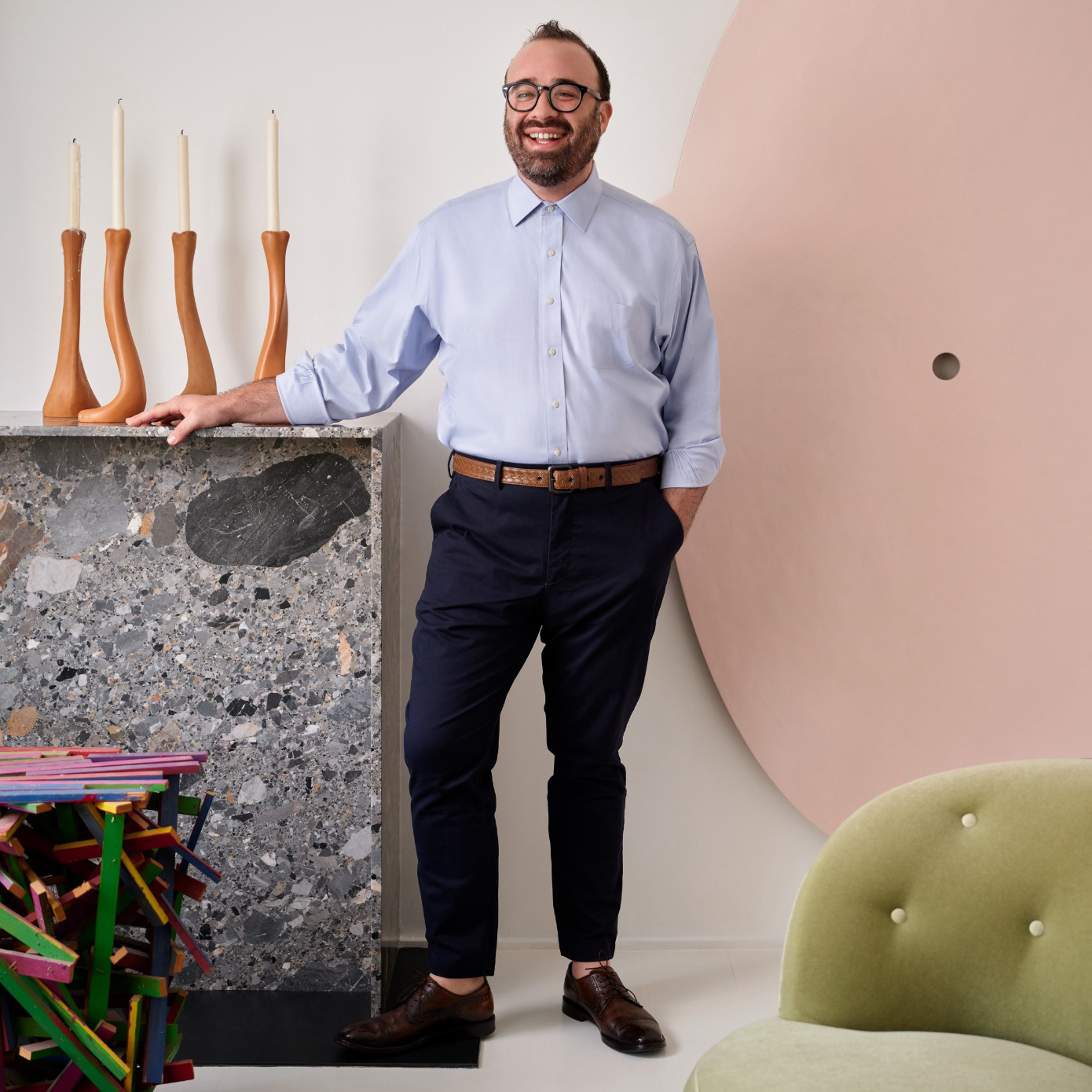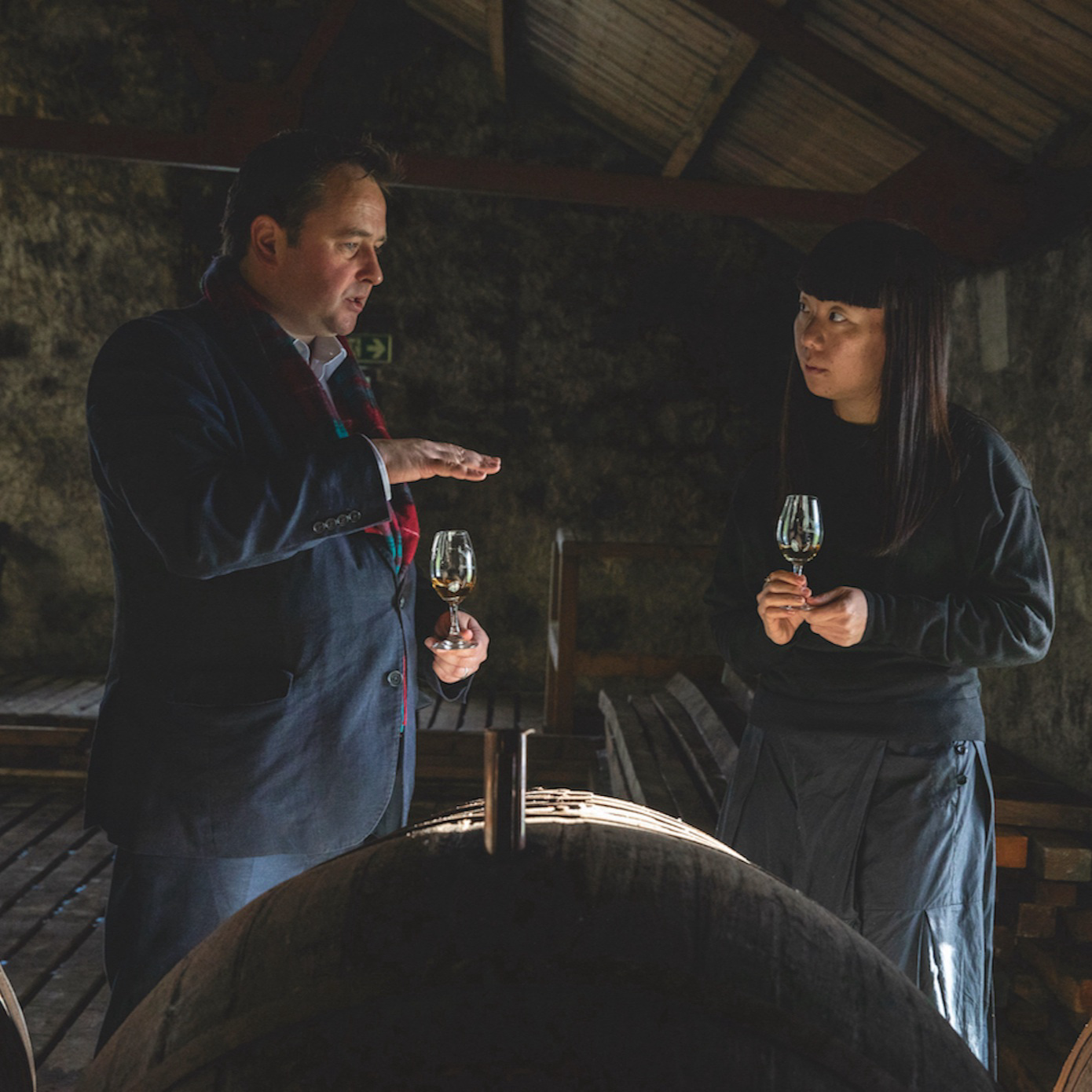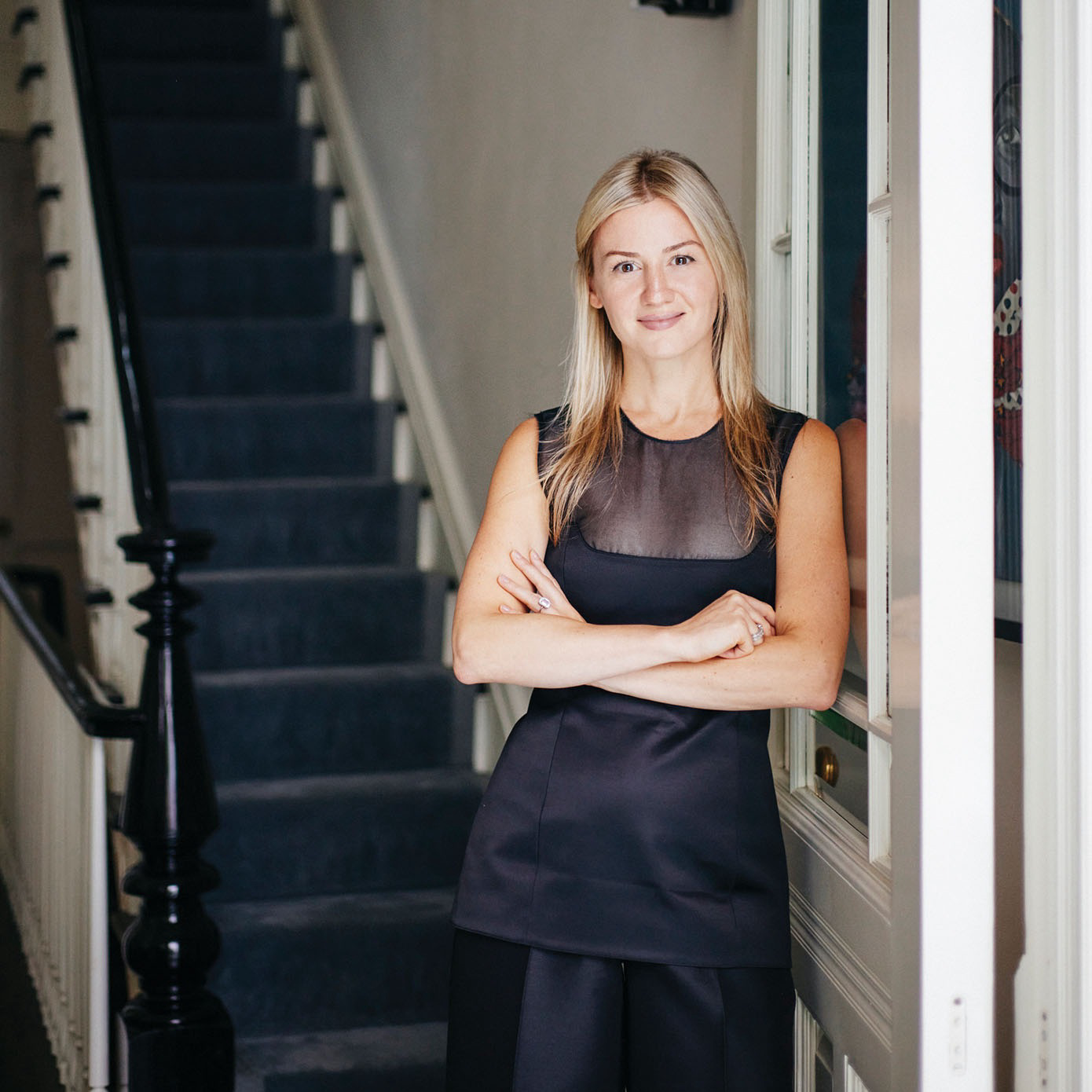At first glance, the works of New York-based glassblower, Jeff Zimmerman, are well-polished pieces of high design. His chandeliers dangle from ceilings worldwide in shiny flotillas and his one-off sculptures shimmer in galleries, as they did recently at his fifth solo show at R & Company in New York.
Look a little closer, and from the traces of highly technical expertise you’ll notice just how Zimmerman has made a name for himself over the course of a 38-year career: traversing the boundaries between high design, contemporary art and, at heart, age-old craft form. Reflecting on his career so far, he likes to think this is his legacy. “For me the goal is how someone approaches something, the freedom of what material you use and how you use it,” he says.
The recent show at R & Company featured more than a dozen new works by Zimmerman—chandeliers, unique sculptures, process experiments and maquettes—and compounded his status as a creative who can deftly flick between art and design. The series of works delved even deeper into Zimmerman’s long-term interest in natural forms: meditations on patterns that recur in nature such as branching, spheres and spirals. Just as snowflakes and crystalline forms are frozen moments in time, so too were the pieces in this exhibition, with water or ice simply replaced by molten glass.
“I’m taking steps deeper into thinking about how time works,” explains Zimmerman. “A lot of the way I work is like Harold Edgerton [the Massachusetts Institute of Technology electrical engineer who experimented with stroboscopic photography] and his flash photography capturing a milk splash or a bullet going through an apple. He immortalized those frozen moments and I think glass does that very well.”
 Zimmerman's Unique sculpture in hand-blown yellow mirrorized glass, 2015. Photo by Joe Kramm, courtesy of R&Company.
Zimmerman's Unique sculpture in hand-blown yellow mirrorized glass, 2015. Photo by Joe Kramm, courtesy of R&Company.
This element of capturing nature as it takes its course is one of the key aspects of Zimmerman’s work. Although he was formally trained in glassblowing, he admits he made the leap from standard glassblower to conceptual glass artist when he decided to simply give in to the tricky medium. And to have fun with it, too: In the mid 1990s, he was part of the experimental glassblowing collective B Team.
 Zimmerman's Illuminated Crystal Cluster sculpture in blue hand-blown glass, 2015. Photo by Joe Kramm, courtesy of R & Company.
Zimmerman's Illuminated Crystal Cluster sculpture in blue hand-blown glass, 2015. Photo by Joe Kramm, courtesy of R & Company.
The group was started by R & Company’s co-founder Zesty Meyers in 1990, and gained sway in 1995 when Meyers moved to New York and expanded the group into a non-profit arts organization. Soon after he counted Zimmerman and Meyers’ future R & Company co-founder, Evan Snyderman, as comrades in the collective. They toured the world staging performances, including one where glass rainstorms poured over umbrellas held above their heads. Zimmerman’s personal creative process may have calmed down in the subsequent years, but his pieces still come about from this alchemy of half-chance and half-control.
Zimmerman will begin a series with an idea in his head —in the case of the recent show, natural processes and patterns—and then repeatedly react to that with glass. “If I try to over-design or over-control, it ends up being forced and contrite and self-conscious,” he says. “It’s about having a feeling of a starting point and then building on that, in collaboration with physics and gravity.”
Creations that take this much technical skill, not to mention time, might seem perhaps out of step with the digital world’s snappy impact on contemporary art, but Zimmerman is adamant it is part of his continuing appeal. “Traditional materials have a soul to them and people are responding to that more. There’s a value to what I create because I create it and not everyone can,” he admits, comparing what he does to the immediacy of rapid prototyping. His pure and simple dedication to an ancient craft—and his ability of making it seem modern and artful—is the secret of his ongoing allure. “Reminding people of what the world is made of is so important. By making the invisible visible, and showing the world that everything is made of these cells and atoms and that there’s movement and time and gravity,” he says.



